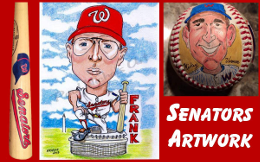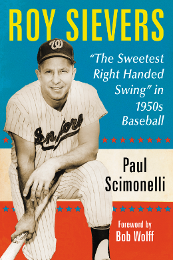Bob Short, keen on collecting name players who were past their prime, inked a deal with the Phillies on 3 November 1970 that brought Flood to Washington. This was less than a month after the stomach wrenching deal with the Tigers. Flood appeared in 13 games for Washington in that fateful summer of 1971. He batted just .200 and played his final game on 25 April. He was just 33 years old.
I was one of the 9.780 fans that watched the Senators defeat the Milwaukee Brewers on 25 April 1971. In the ninth with one out and the score tied at 2-2, Flood was sent in to pinch hit off Marcelino Lopez with runners on first and second. I remember Flood trying to bunt at one point but he walked. Tim Cullen followed with a foul out and Mike Epstein struck out. Flood stayed in to play center field. Little did we know at the time that it would be the last game of Curt Flood’s career.
Washington won in extra innings thanks to a single by Tommy McGraw. We didn’t see that happen since my dad didn’t want to stay. At the time my parents were not baseball fans so it took some pleading and good behavior just to get my dad to take my brother and me to a game.
Curt Flood was originally signed by the Reds in 1956. The following year the Reds traded him to the Cardinals. One of the players the Cardinals got for him was a familiar one for District baseball fans, Marty Kutyna. Flood spent 14 seasons with the Cardinals and was a three time all-star. After a season marked with some conflict with the management of the Cardinals the team decided to trade Flood. In October 1969 Flood was packaged with several other players in a trade with the Phillies. Flood elected not to report.
Bowie Kuhn turned down Flood’s request for free agency. Thus set in motion Flood’s challenge to the reserve-clause.
Credit for the reserve-clause is given to Arthur Soden. Born in 1843, Soden was an powerful if somewhat cantankerous owner. He helped squash the 1890 Player’s Rebellion. Soden is perhaps best known to old District baseball cranks as the man whose indecision indirectly led to Washington owner J Earl Wagner spending a night in jail. Not a bad thing when you think of it.
The Federal League was the last great challenge to the major leagues. An odd legacy is that the owner of the Baltimore Terrapins refused to settle like the other clubs had done and instead filed a lawsuit charging the two big leagues for conspiring to monopolize baseball. The suit that slowly percolated up through the judicial system. The 1922 ruling by Justice Oliver Wendell Holmes, Jr affirmed the Court of Appeals ruling, finding that “the business is giving exhibitions of base ball, which are purely state affairs.” The case, “Federal Baseball Club vs. National League let baseball out of the Sherman Antitrust Act.
The case, now known as Flood vs. Kuhn did not reach the Supreme Court until 1972. Flood lost in a 5-3 vote, but it was close.
It took enormous courage to face down the system and Flood did it without much support. It should be noted that no teammates or active players supported Flood at the time. Testifying for him were Jackie Robinson, Hank Greenberg and Bill Veeck.
In 1970 the player’s union and Major League baseball reached agreement on the 10/5 rule. Referred to today as the Curt Flood Rule. The bonds of the reserve-clause were finally broken.






